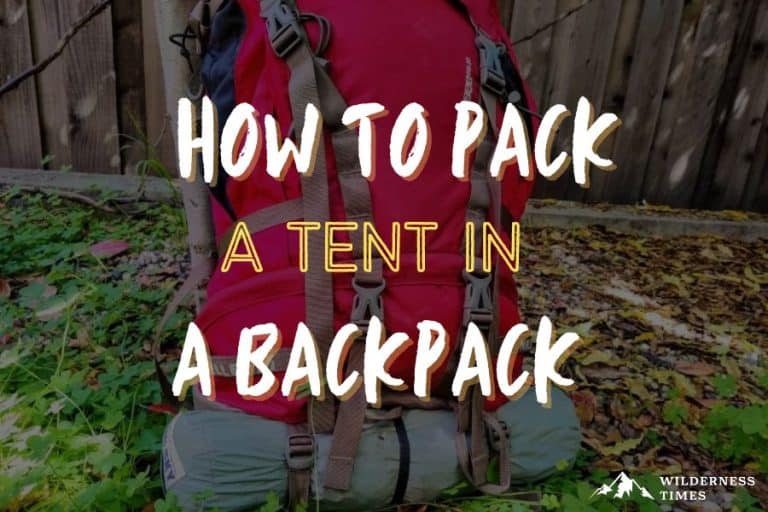For a disorganized person like me, preparing for a backpacking trip can be nerve wracking.
You need to find a way to get all of your necessities into a single rucksack. Clothes, food, toiletries… How on Earth are you supposed to fit a tent in there?
A camping tent – the bulkiest thing on your packing list – doesn’t actually have to take up a lot of storage space. In this article, I’ll show you a few different methods of minimizing the amount of space your tent takes up in your backpack.
So, if you want to know how to pack a tent in a backpack the right way, read on!
Folding A Tent
One way you can pack your tent is by folding it. Regardless of the type of tent you have, the steps are pretty much the same.
Pay attention to the size of the folded tent, as it should be slightly smaller than the dimensions of your backpack in order to fit inside.
Okay, now that we have technicalities out of the way, here’s how to fold a tent:
Place The Flysheet Inside The Tent
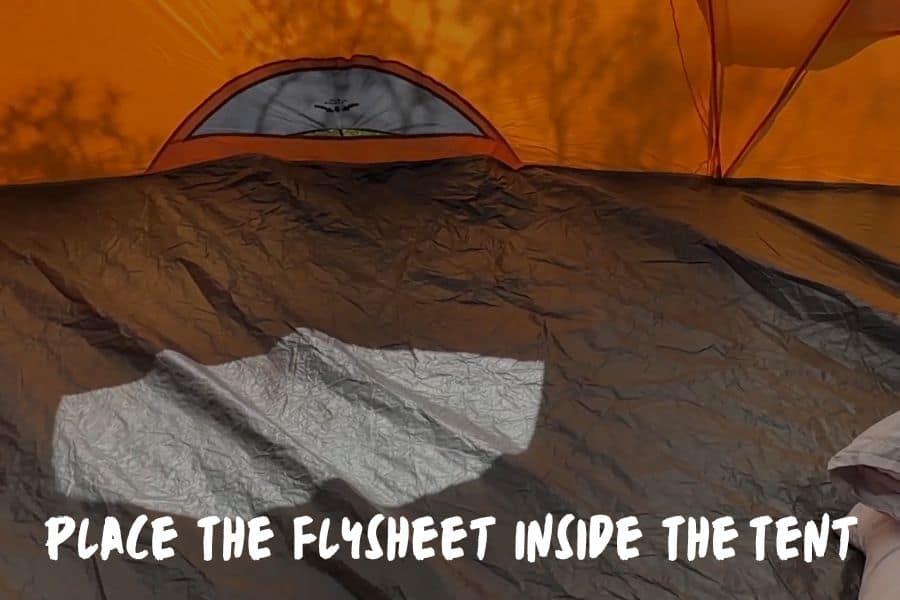
First things first, remove the rain fly from your tent – if it has one. Then, unzip the tent doors and lay the flysheet inside on the floor, as flat as possible.
Remove The Poles & Pegs
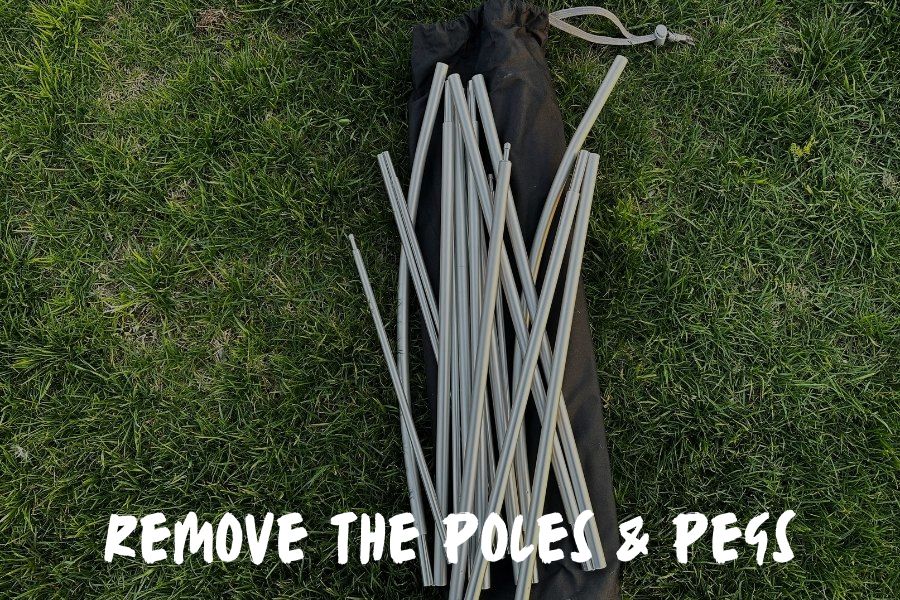
Take out all the removable parts, such as poles and pegs. This will cause the tent to lose its shape and collapse, while the floor remains spread out.
Start Folding
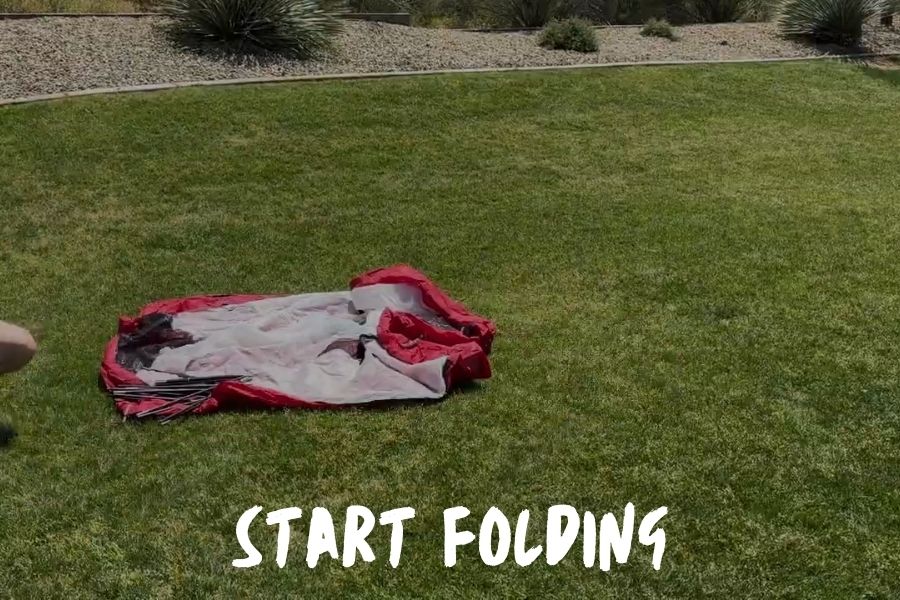
When you’re packing a tent, it’s important to keep the folded dimensions in mind, as it has to fit inside your backpack.
Start by folding both sides of the tent towards the middle, making sure the folded section is within the desired length limit.
Once you’re done, your tent should be folded into a rectangular shape with a width slightly smaller than your backpack.
Remove The Air
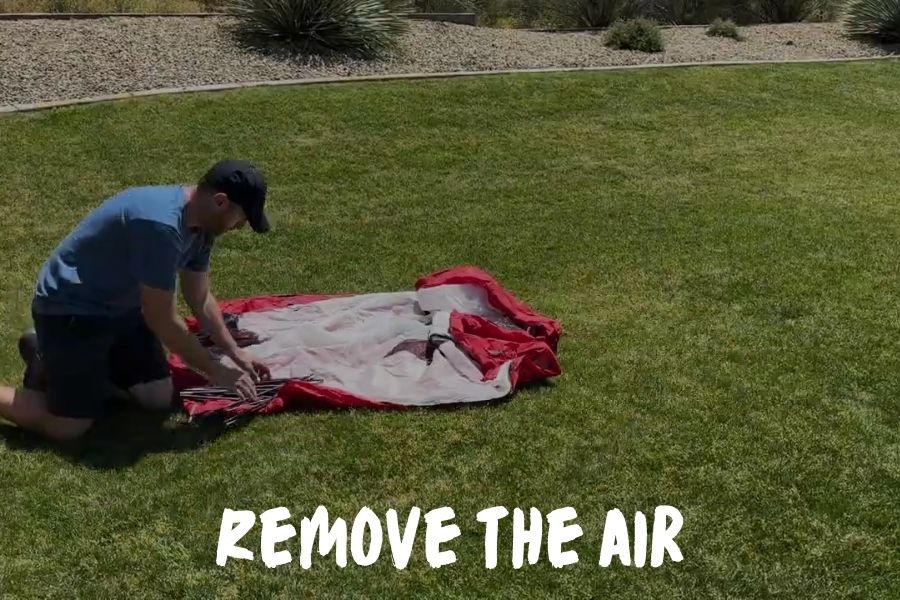
If there’s air trapped inside, it will make the whole thing look like a balloon. Luckily, that’s an easy fix – simply walk over the folded tent and get rid of every air bubble that’s visible.
Fold The Tent To A Packed Size
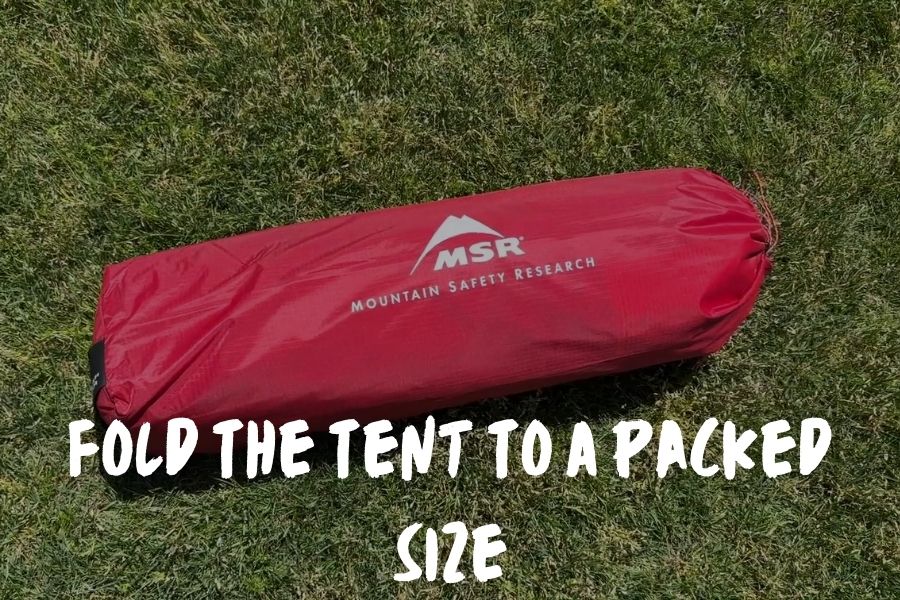
Now that we have one long rectangular, it’s time to turn it into a square. Again, keep the final dimensions in mind when folding.
If there’s any residue air inside the tent, this is your last shot at getting it out.
Put It In Your Backpack
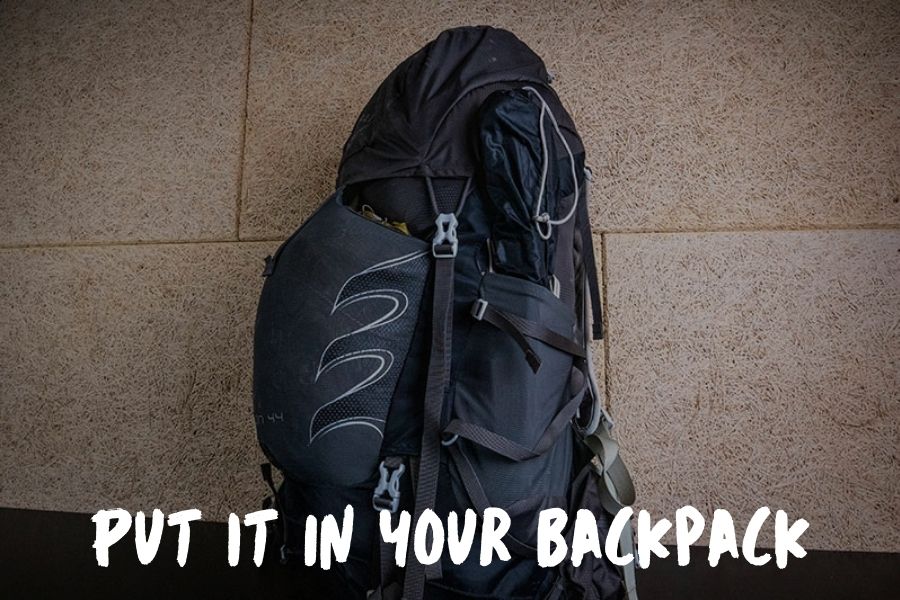
Now that you have a square-shaped packed tent, it’s time to fit it into your backpack.
Ideally, you want to place it vertically, so that it’s parallel to your back and takes up the least amount of room in your pack.
Rolling A Tent
Another way to pack your tent in a backpack is to roll it, then place it inside your pack (The Internal Method) or strap it to the outside (The External Method).
Here are the ways to do both:
The Internal Method

Backpacks with internal frames have more room for loading camping gear, so they’re a better option for packing a tent inside.
Sure, you can put a tent inside an external frame pack, but that’s definitely not the best way to pack your backpack.
Step 1: Lay It Flat & Inspect
The first thing you should do is lay the tent flat.
Inspect it for dirt and bugs, but most importantly, make sure it’s not damp. The tent needs to be completely dry when packed. If you pack up a wet tent, it will grow mold and mildew.
Step 2: Pack The Tent Poles
Take your tent poles and pack them in the bag they came in.
Then, as your tent still lays flat on the ground from the first step, place the bag at the bottom left or right corner of the tent, so it’s parallel to the bottom edge.
Step 3: Let’s Get Things Rollin’
The reason we placed the bag on the tent is because we’re going to roll the tent around it. The tent poles will work as a skeleton, meaning it will make the whole thing firm and stable.
You want to roll the tent around the pole bag as tight as you can, or else it might come loose and unroll inside your backpack. This could cause things to get tangled and you can end up accidentally ripping your tent.
Remember, our aim is to pack the tent in the most compact way possible, so that it doesn’t take up much storage space.
Make sure to keep the bag and tent aligned as you roll it around. If it appears messy or awry, unroll the whole thing and start over.
Somewhere along the line, you can also put a bag with tent pegs on the whole thing and continue rolling. This adds firmness and stability to your tent burrito.
Step 4: Use A Tent Bag
Tents usually come in a bag or stuff sack that keeps them tightly packed.
Once you’ve rolled up your tent around the poles, pack the rolled tent inside the tent bag.
Step 5: Start Packing Your Backpack
Now that your tent is compactly packed, it’s time to load your gear into a backpacking backpack.
Since we’re using the internal method, you need to make sure the bag is large enough for your tent to fit in, along with all the other necessary equipment.
Making an inventory list is a good idea prior to packing. Not only your back, but your whole skeleton is affected by the weight you’re carrying. Overpacking puts a lot of strain on your body, so avoid it at all costs.
To do so, follow a simple rule of thumb – never pack more than 30% of your body weight. Not only would you look like the hunchback from Notre Dame, but you could seriously injure yourself when carrying too much on your back. So figure out what backpacking base weight is best for you.
The order you pack things matters, too. The heavier items should always be at the bottom. This is because our hips are the center of gravity and the part of our bodies that can carry the most weight.
Start by packing stuff that is not only heavy, but not needed until you get to the campsite. The first thing to go into your backpack should be your sleeping bag.
This bulky piece of gear is the last thing you need during a hike, and you don’t want to have to take it out every time you want to get something out from your backpack.
Step 6: Pack Your Tent
After you’ve packed your sleeping bag, place the tent right on top of it. Put it as close to the backside of your pack as you can, for better load distribution.
You can pack the tent either vertically or horizontally. Vertical packing allows you to access your tent easily, while a horizontal position allows you to pack more equipment on top of it.
Obviously, the way you pack the tent will depend on the size of your hiking backpack, as well as the rest of the gear you’re packing.
The External Method

But what if your tent is too large for your backpack, or if you need more room for all of your camping equipment?
You can carry your tent by attaching it to your pack.
Nowadays, most hiking backpacks have loops and straps that allow you to fasten bulky pieces of gear to the outside.
If you have an external frame backpack, this is obviously a more suitable way of carrying your tent. This type of pack has a variety of attachment points on the frame for things like tents and sleeping bags.
Regardless of what type of backpack frame you have, there are a few steps you need to take to pack your tent properly if you want to pack it externally.
Step 1: Roll Up Your Tent
The first four steps of the internal packing method apply here, too.
Lay your tent down on the floor and place a bag with poles in one corner.
Then, roll everything up and put it in the tent bag.
Step 2: Protect It From Rain
Even though most tents nowadays are waterproof, the rain can still get inside the tent.
This will weigh you down quite a bit. So make sure you place your tent inside a waterproof bag, and seal it tight.
Step 3: Check Your Straps
Make sure all the straps and loops on your backpack are secure.
The last thing you want is a tent to slip off. Knowing my luck, this would happen while walking over a river bridge, and I would wave goodbye to my tent as I watch it flow down the stream.
If your straps are sliding, you can just make a simple knot to keep them in place.
Step 4: Pack It At The Bottom
Like I said, attaching your tent to the bottom part of the backpack helps with weight distribution.
Asides from that, it allows you to move easily and without restraints.
Step 5: Secure It In Place
Most backpacks have webbing loops that allow you to attach different pieces of equipment. They can be either daisy chains or individual loops, stitched on at different points around your backpack.
Tie your tent bag’s straps to the webbing loops on your pack. Any secure knot will do. Make sure your tent is not loose, otherwise it will sway around like a wrecking ball.
Compression straps are another way you can attach your tent to the backpack. Thanks to the buckles, everything stays tightly in place.
Pull the straps over your tent bag, and connect the buckles. Tighten the straps to prevent the tent from moving. Make sure it’s attached in such a way that the weight is equally distributed on both sides.
Finally, if you have an exterior frame backpack, it features tie points at the bottom that allow you to easily attach your tent.
Factors To Consider
Packing might seem like a thoughtless activity, but it’s quite the opposite.
With limited space and plenty of things to pack, it seems like you’ve got some planning to do.
There are a few things you should consider beforehand.
Size

Obviously, you need a backpack large enough to accommodate not only your tent, but other important pieces of equipment too.
But what if you’re carrying a large multi-person tent?
No matter how spacious your backpack is, a family tent would take up a large portion of it. In this case, an external packing method is probably a better idea.
Rolling Vs. Folding The Tent
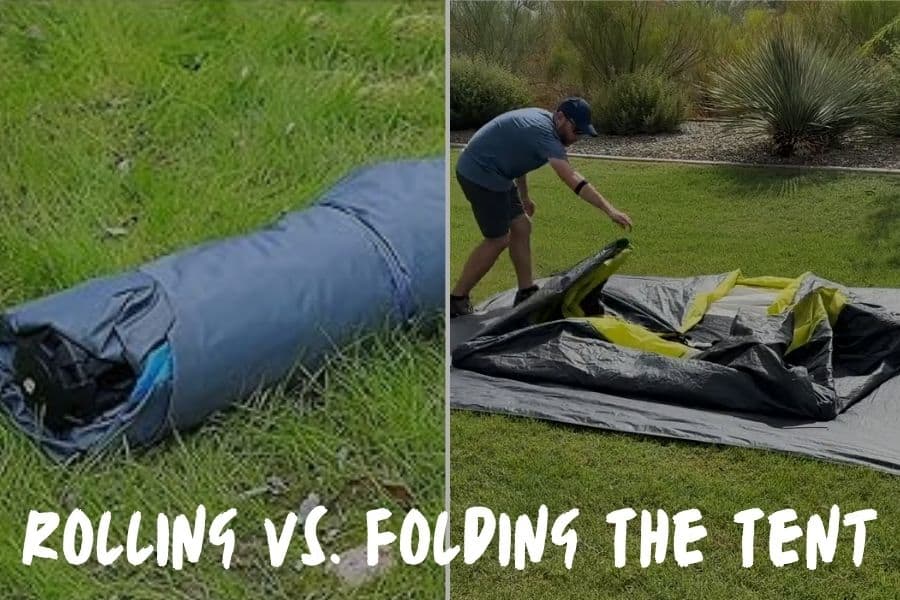
Interestingly enough, one of the factors you should consider when storing a tent in your backpack is how you’re packing it.
You can either roll it or fold it.
But which option is better?
Well, it depends on the size and shape of your backpack, as well as the size of your tent.
For internal storage, folding a tent allows you to place it vertically, along with the back side of your backpack, leaving enough room for other pieces of your gear at the bottom of the pack.
When storing your tent externally, rolling makes it easier to attach it to your backpack.
Utilizing Compression Or Stuff Sacks
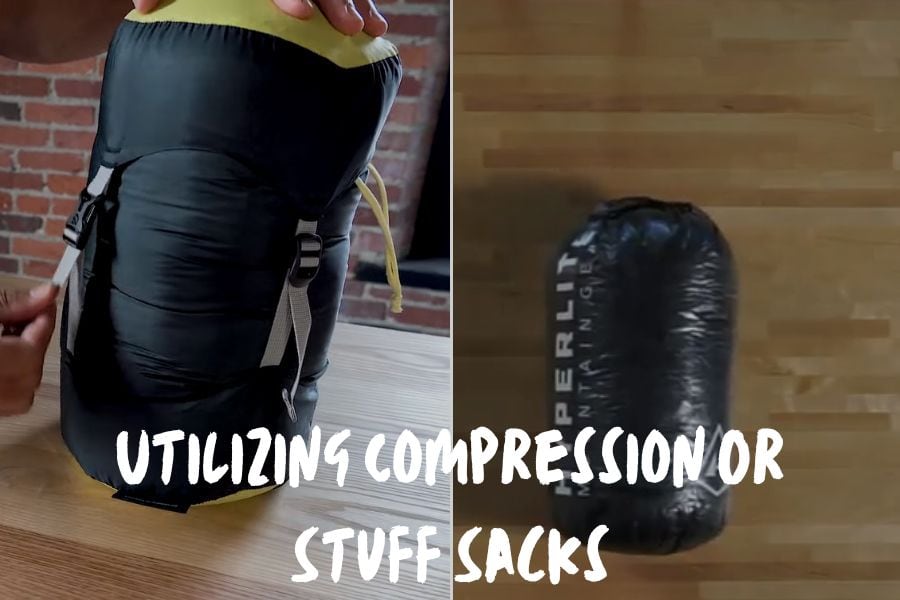
Pretty much any tent comes with a compression or stuff sack, so why not use it?
Stuff sacks are generally more durable, so keeping them exposed to weather elements and tough terrain shouldn’t be too much of an issue.
This makes them a better option for the external packing method.
Compression sacks, on the other hand, are typically made of thinner fabric, so they’re prone to wear and tear.
However, they help in reducing the packed size of your tent, which makes them ideal for the internal packing method.
Packing Tent Poles Inside Vs. Outside
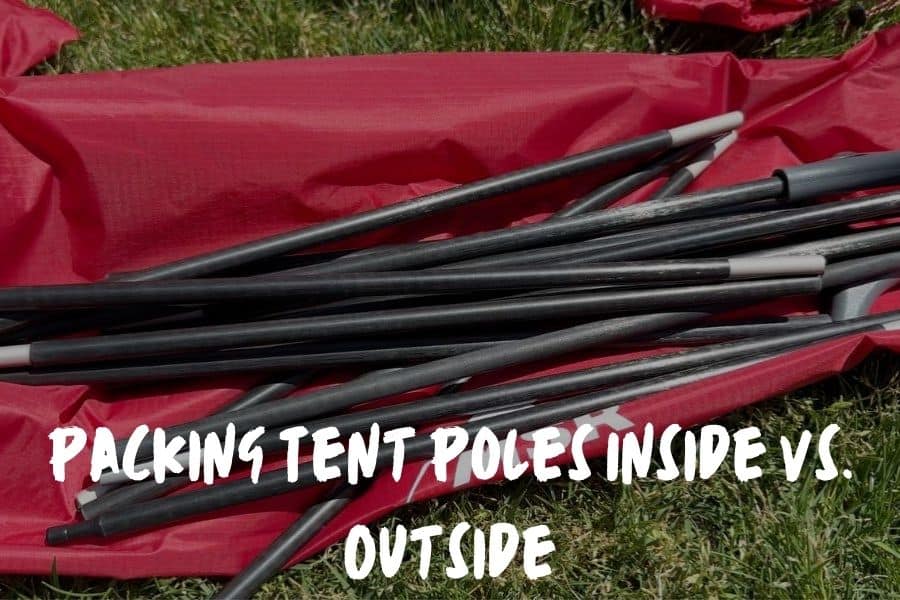
Generally, it’s better to store the poles outside of your backpack, regardless of how you’re storing the rest of your tent.
The reason is that they’re typically longer than your backpack, which makes interior storage awkward.
Not just that, but if they would move around the backpack interior, there’s a risk of them potentially damaging the backpack fabric.
Internal Vs. External Frame Backpack
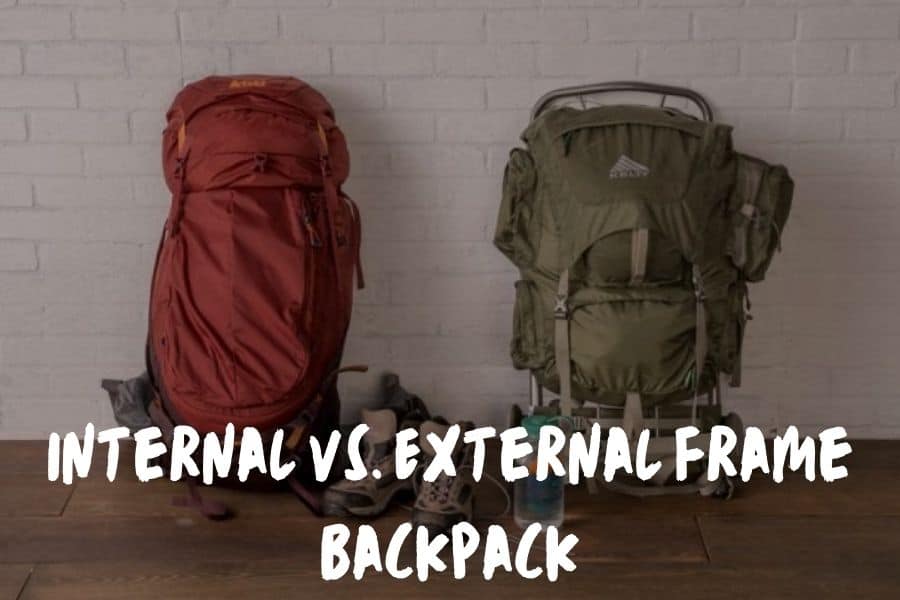
Internal frame backpacks are lighter and more adjustable.
They have a slimmer profile, which makes them great for trails with a lot of bushes and branches that you can get stuck in.
External frame backpacks have lots of pockets, lashes and straps that allow you to attach additional equipment.
But, there’s always the risk of snagging your tent on a branch. What’s more, if you don’t secure it properly, it can slip off in the middle of a hike.
Tent Bag
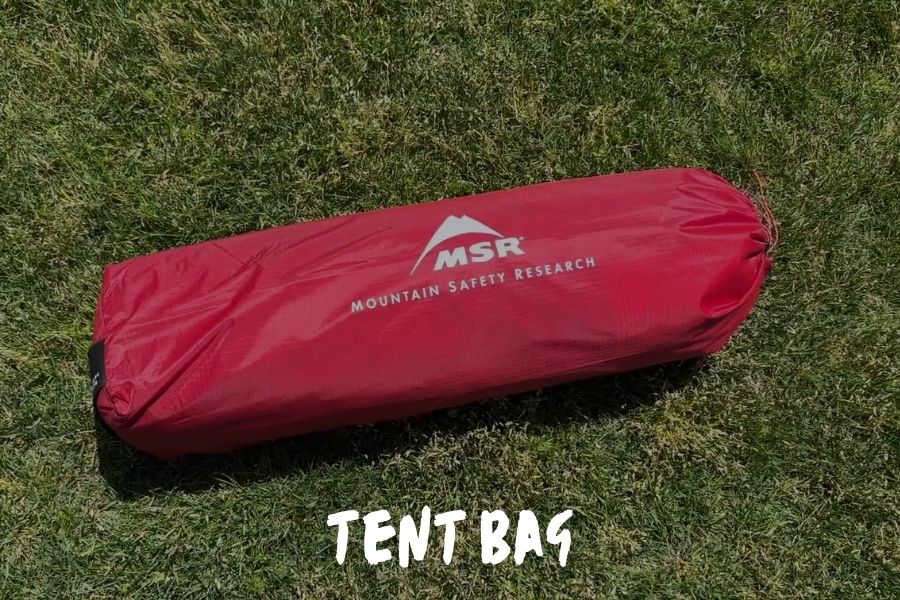
Tents always come in their own carry bags, but they’re not always the best option for packing into a backpack.
If you want to put a bulky tent in a medium-sized backpack, you need to squish it down. In other words, get a compression sack and make that bad boy as compact as possible.
A compression sack works well for the external packing method, too.
Aside from that, you should also consider getting a waterproof bag. Rain comes and goes unexpectedly, so this will allow you to keep your tent safe from moisture.
FAQs
Can I Use Alternative Methods To Roll Or Pack My Tent In A Backpack?
You can always stuff your tent into the backpack. Stuffing is definitely the quickest of the methods, which makes it suitable for the field.
However, keep in mind that stuffing will create wrinkles on your tent, and if you’re too rough, you risk damaging it.
Are There Any Creative Hacks Or Tips For Maximizing Space When Packing A Tent In A Backpack?
If you’re camping with a friend, consider splitting the tent parts between you.
For instance, you can pack the rain fly and the poles, while your companion is carrying the inner tent.
Can I Loose Pack My Tent In My Backpack?
Loose packing is quick and suitable when you’re on a tight schedule. However, you shouldn’t practice this method too often, as it will get your tent all wrinkled up.
Can I Repurpose Any Items Or Gear To Help Pack My Tent In A Backpack?
Repurposing items and gear is a great way to save money and the environment. In the case of storing a tent, you can use your old tent’s guylines to reduce the packed size.
You can also use an old stuff sack from your tent, sleeping bag, or a pad for the same purpose.
Are There Any Specific Considerations For Packing Different Types Of Tents (e.g., Dome Tents, Tunnel Tents, Hammock Tents) In A Backpack?
In most cases, you only need to fold the fabric and roll up the tent after you take out the poles.
However, certain dome and tunnel tents may have corner edges, which are built-in rods for additional stability.
If that’s the case with your tent, make sure that the corner edges lie at right angles to the direction in which you’re rolling up the tent.
Is It Lighter To Pack A Hammock Than A Tent?
Hammocks typically consist of less material; not just fabric but also zippers, poles and stakes. So, the overall weight of a hammock is lower than a tent.
That’s not to say you can’t find 1-person tents that are just as light as a hammock – if not even lighter.
To Sum It Up
Learning how to pack a tent in a backpack is not rocket science.
Yet, randomly throwing things inside your pack is very inefficient.
With such limited storage space, you need to be practical. By following these simple steps for packing your tent using either an internal or external method, you can make the best use of your backpack and save space for other essential items.


